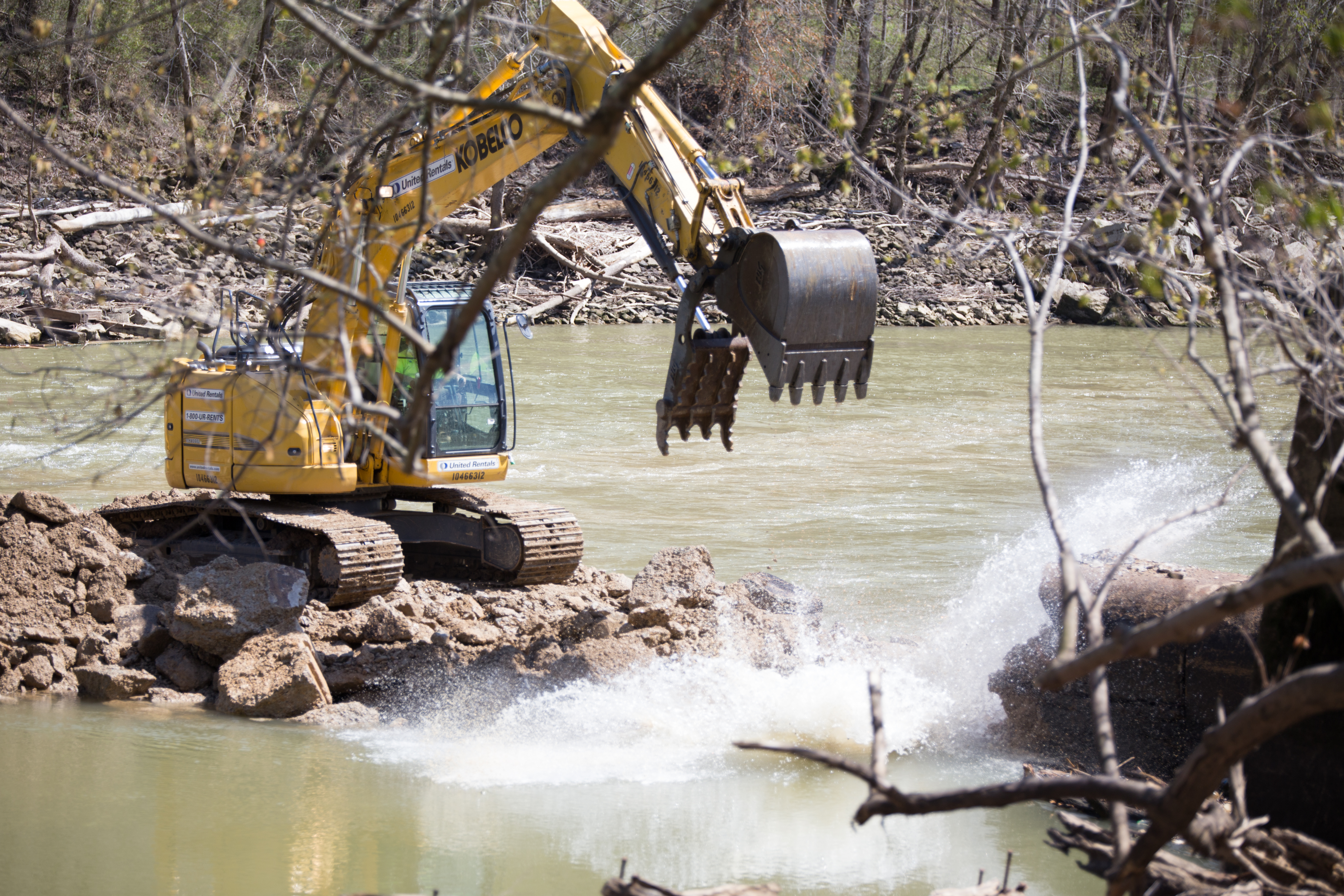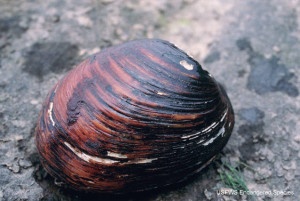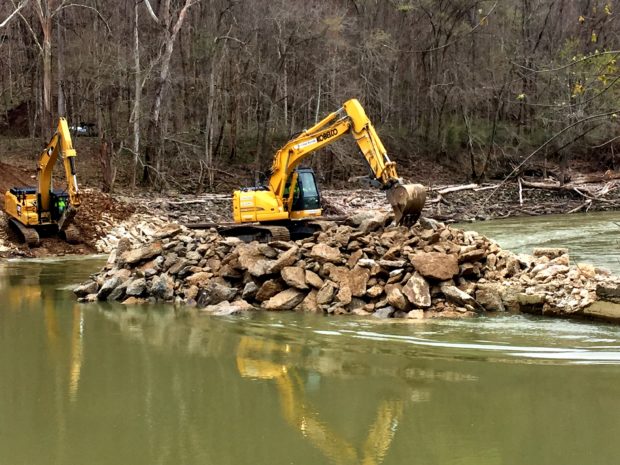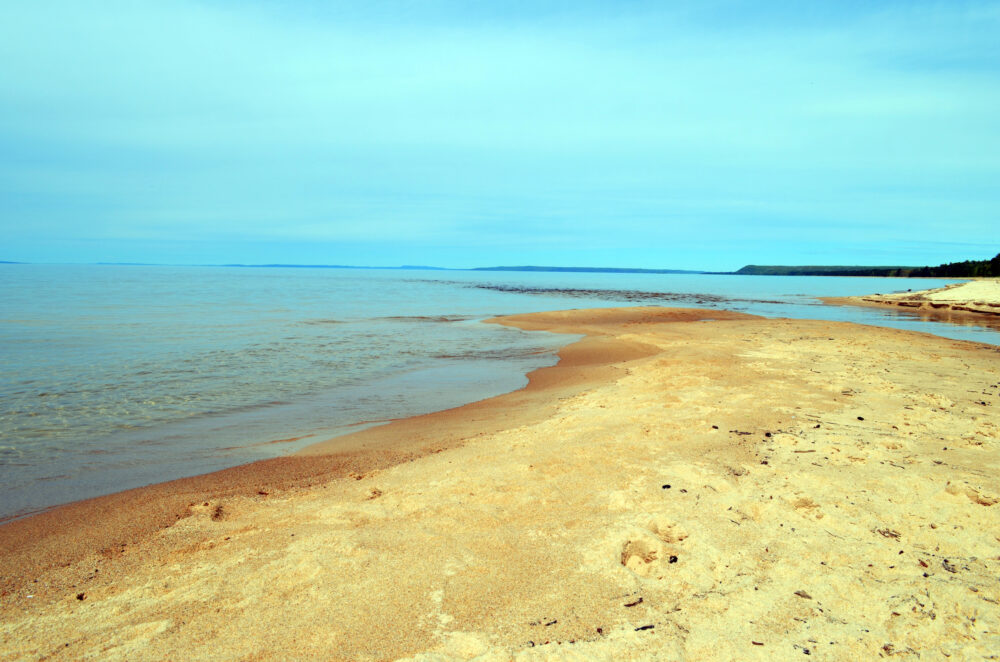We have much more to do and your continued support is needed now more than ever.
Restoring the Green River

The Green River in Kentucky is a mysterious beauty. People living near it say it is the deepest river in the world. When I was young, my family was waiting for the ferry to come across and my parents told me it was bottomless. Maybe there was some truth in that because there are caves that open into the river bottom. Even the wildlife are a mystery to most. There are blind cave shrimp in those caves, strange fish like the gar, and an assortment of mussels.

Mystery of the Mussels
Freshwater mussels are one of the Green’s biggest mysteries and most interesting feature. They live mostly unseen in their gravel bar homes. Part of their life cycle they are free swimming and latch onto fish gills, almost like a parasite. Then they release, grow a shell, and burrow into the river bed to spend up to 50 years filtering the water and making new baby mussels. They need clean water and a healthy and diverse fish population.
The Green River is home to more than 150 fish species, more than 70 mussel species, and 43 endemic species (species existing nowhere else in the world). This includes nine endangered mussel species and endangered freshwater shrimp (the Kentucky cave shrimp).
Removing Obstacles
Dams were built along the Green River and its tributaries in the early 1900s to allow barges to travel its waters, carrying cargo such as minerals mined in the region and passengers to see the caverns of Mammoth Cave. These dams operated up into the 1950s. Dams greatly change the flow of a river and this affects its wildlife. Fish and mussels, linked as they are in their life cycles.
Kentucky Waterways Alliance(KWA) works to protect, restore, and celebrate the waterways of Kentucky and has a special connection to the Green. For many years, our office was in the watershed and we have always had projects there. It has been a dream for KWA and many other groups that love the river that some of the old defunct dams could be removed so the river could be free-flowing, the wildlife could thrive, and paddling would be safer and easier.

In 2016, we finally saw an opening. Working with The Nature Conservancy, US Fish & Wildlife Service, US Army Corps of Engineers, Mammoth Cave National Park, Kentucky Department of Fish & Wildlife, and many others, a plan was developed to remove three dams. Then, on Thanksgiving weekend last year, Green River Dam 6 failed. It did not break apart, but rather developed a scour hole beneath it. It was a dangerous situation and that brought Corps of Engineers funding.
In April, an amazing crew of dam busters from the US Fish & Wildlife Service came in with their concrete breakers and trackhoes. They worked for two weeks from daylight to dark. Most of the dam’s concrete debris was put into that scour hole. The equipment operators said that they thought there was a cave down there. We eventually demolished the 220-foot long dam and used that debris to fill that mystery hole. Now the river is flowing free in nine miles of the Green and into passages of the Mammoth Cave National Park. The mussels and fish are able to move into new habitat.
Just after the last blow to the dam destroyed it forever, a great blue heron flew into view from downstream, circled the now-free river, and lighted in the water to herald the restored river.
Keep up with our work in the Green River Basin on our website and on Facebook
About the author:
 Ward Wilson, Executive Director ward@kwalliance.org
Ward Wilson, Executive Director ward@kwalliance.org
Ward Wilson became Executive Director of Kentucky Waterways Alliance in February 2017. Ward previously served as Vice Chair of the Board of Directors and has been an active member of KWA for over 20 years. Ward is a Kentucky native, who grew up in Shelbyville and earned his B.S. in Biology from the University of Kentucky and an M.S. in Environmental Engineering from Virginia Tech. He is a licensed Professional Engineer in four states and Board Certified by the American Academy of Environmental Engineers and Scientists. Ward has always been fascinated with water and wildlife, enjoying waterways for recreation, serving on nonprofit boards such as the Soil & Water Conservation District, and as an engineer specializing in water quality improvement.





















